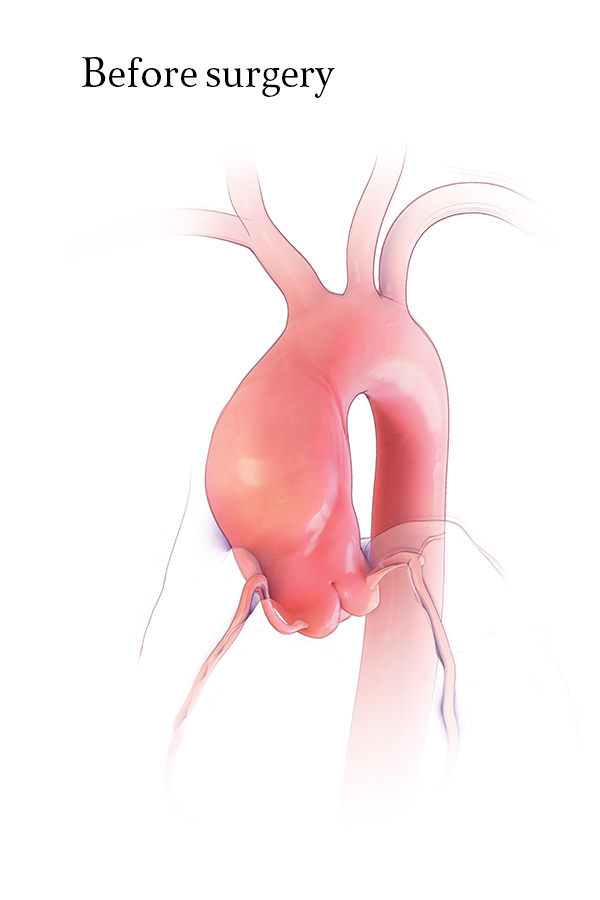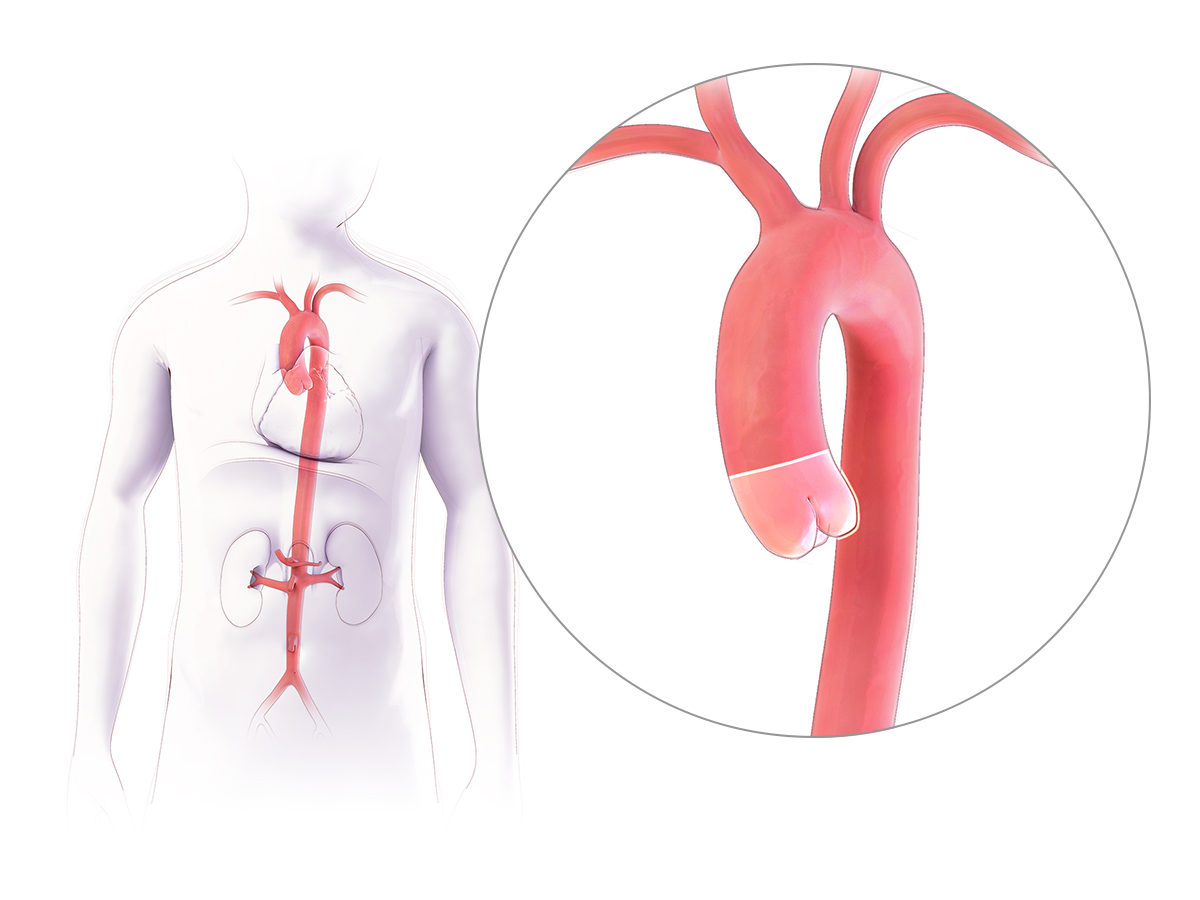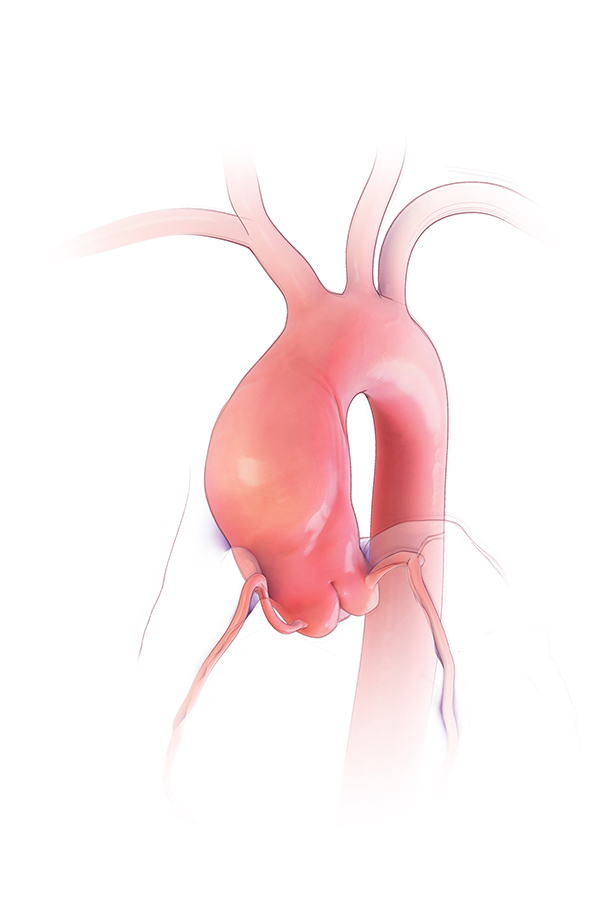Your Aortic Root
The aortic root is connected to the heart. The aortic root is a complex structure that contains the aortic valve and the origins of the left and right coronary arteries. Normal function of the aortic valve can be altered by changes in the size and shape of the aortic root. The unique shape of the aortic root allows for adequate blood flow into the coronary arteries to ensure the heart muscle can function appropriately. Diseases which affect coronary artery blood flow can impact the heart’s ability to pump effectively.
Mechanical Composite Root Replacement
This procedure is indicated for patients with aortic root aneurysms and abnormal aortic valve leaflets. The procedure involves excision of all diseased aortic root tissue and the aortic valve leaflets, followed by replacement of the aortic root complex with a mechanical valve that is sewn inside a Dacron graft. The left and right main coronary arteries are subsequently reimplanted into the graft with fine permanent suture and the neo-root is sewn back to the ascending aorta to complete the procedure.
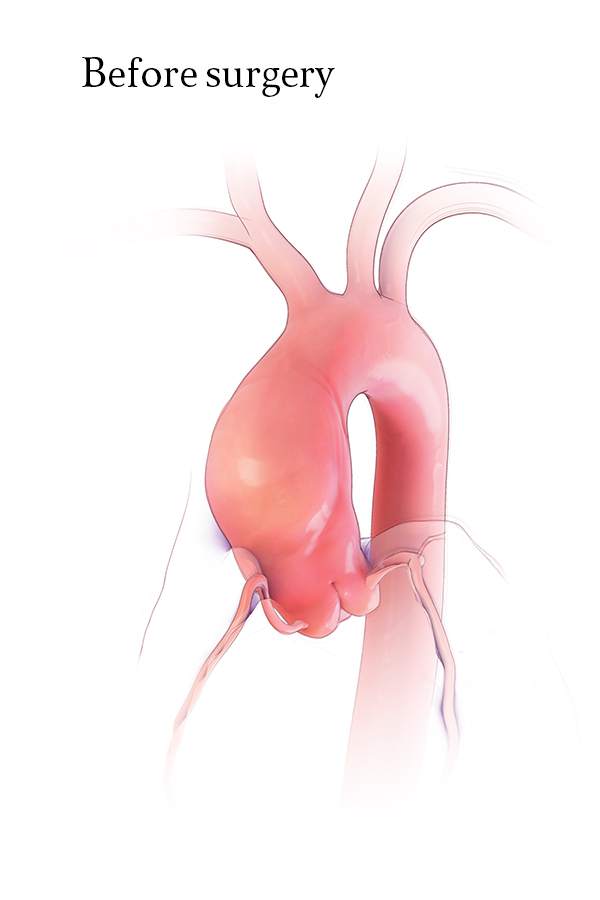
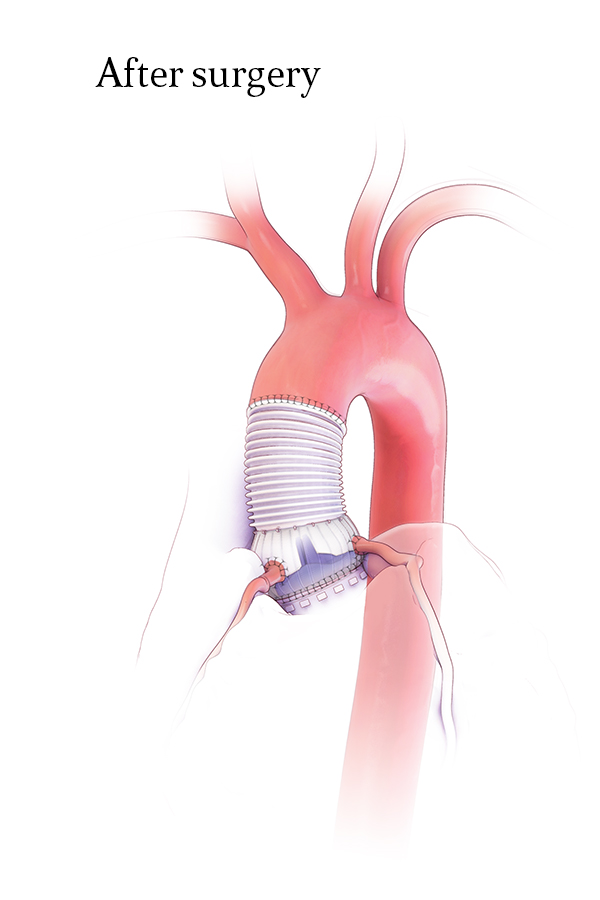
Interactive 1. Mechanical Composite Root Replacement
Drag the circle side-to-side
Tissue Valved Conduit Root Replacement
This procedure is indicated for patients with aortic root aneurysms and abnormal aortic valve leaflets. The procedure involves excision of all diseased aortic root tissue and the aortic valve leaflets, followed by replacement of the aortic root complex with a tissue (porcine or bovine) valve that is sewn inside a Dacron graft. The left and right main coronary arteries are subsequently reimplanted into the graft with fine permanent suture and the neo-root is connected back to the ascending aorta to complete the procedure.
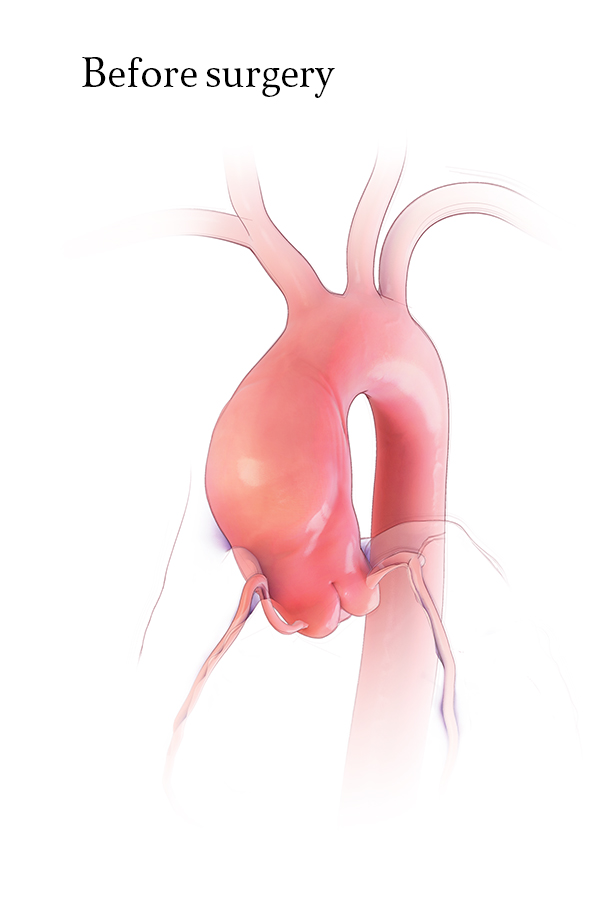
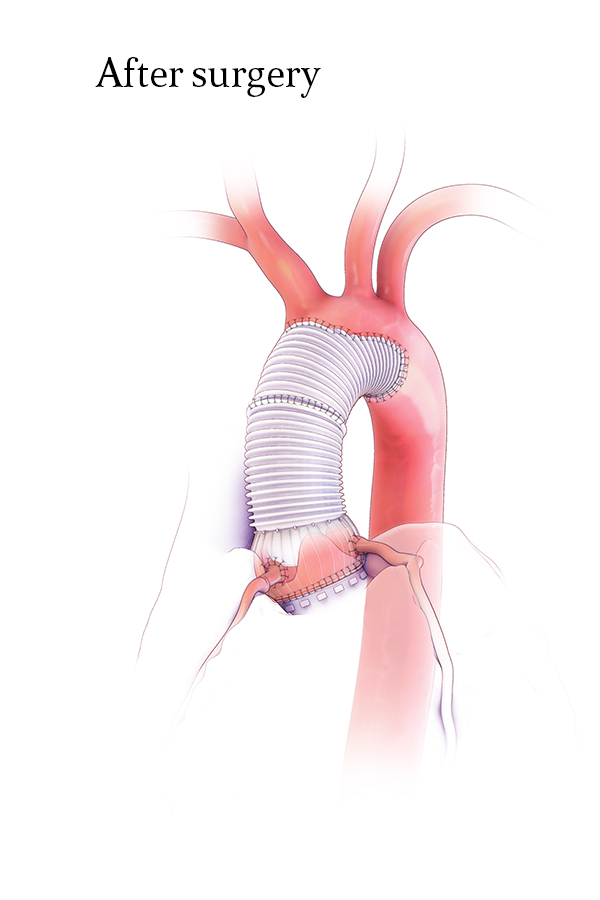
Interactive 1. Tissue Valved Conduit Root Replacement
Drag the circle side-to-side
Porcine Bioroot Replacement
This procedure is indicated for patients with aortic root aneurysms and abnormal aortic valve leaflets. The procedure involves excision of all diseased aortic root tissue and the aortic valve leaflets, followed by replacement of the aortic root complex with a full porcine aortic root which includes a porcine valve. The left and right main coronary arteries are subsequently reimplanted into the porcine root with fine permanent suture, and the porcine root is connected back to the ascending aorta to complete the procedure.
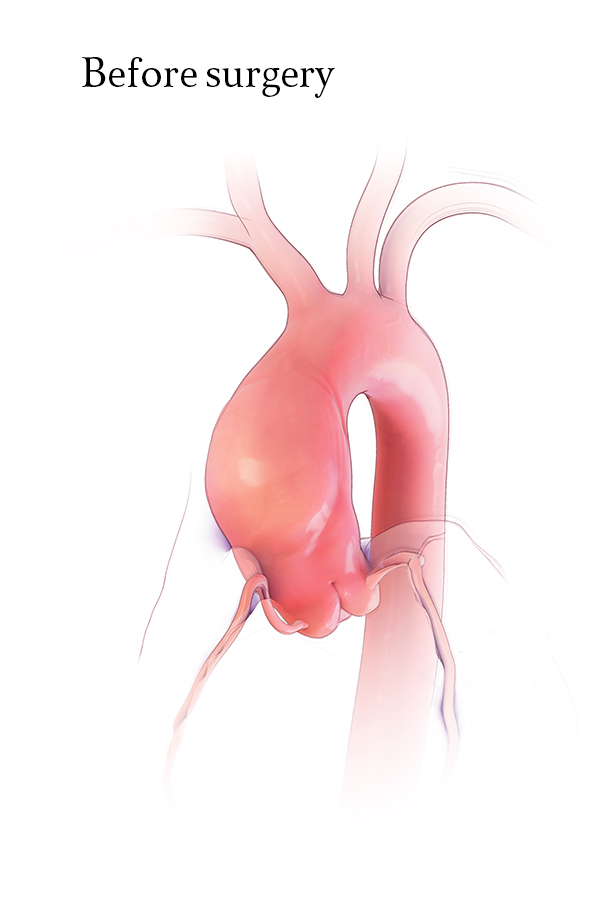
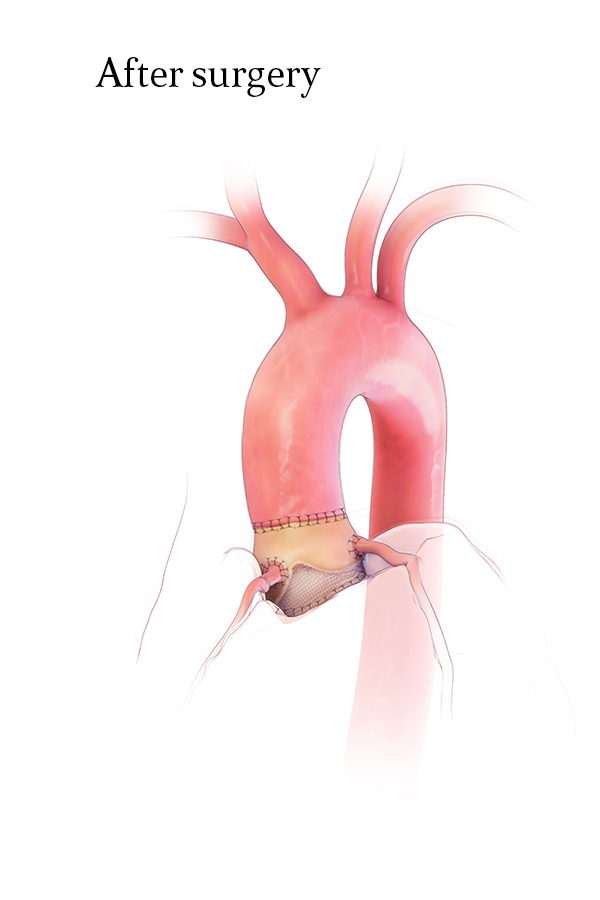
Interactive 1. Porcine Bioroot Replacement
Drag the circle side-to-side
Reimplantation Valve Sparing Root Replacement
This procedure is indicated for patients with aortic root aneurysms and normal aortic valve leaflets. This complex procedure involves excision of all diseased aortic root tissue with preservation of the aortic valve leaflets. The leaflets are reimplanted with fine permanent suture into a Dacron graft that has been customized for each individual patient. The left and right main coronary arteries are subsequently reimplanted into the graft with fine permanent suture, and the neo-root is connected back to the ascending aorta to complete the procedure.
